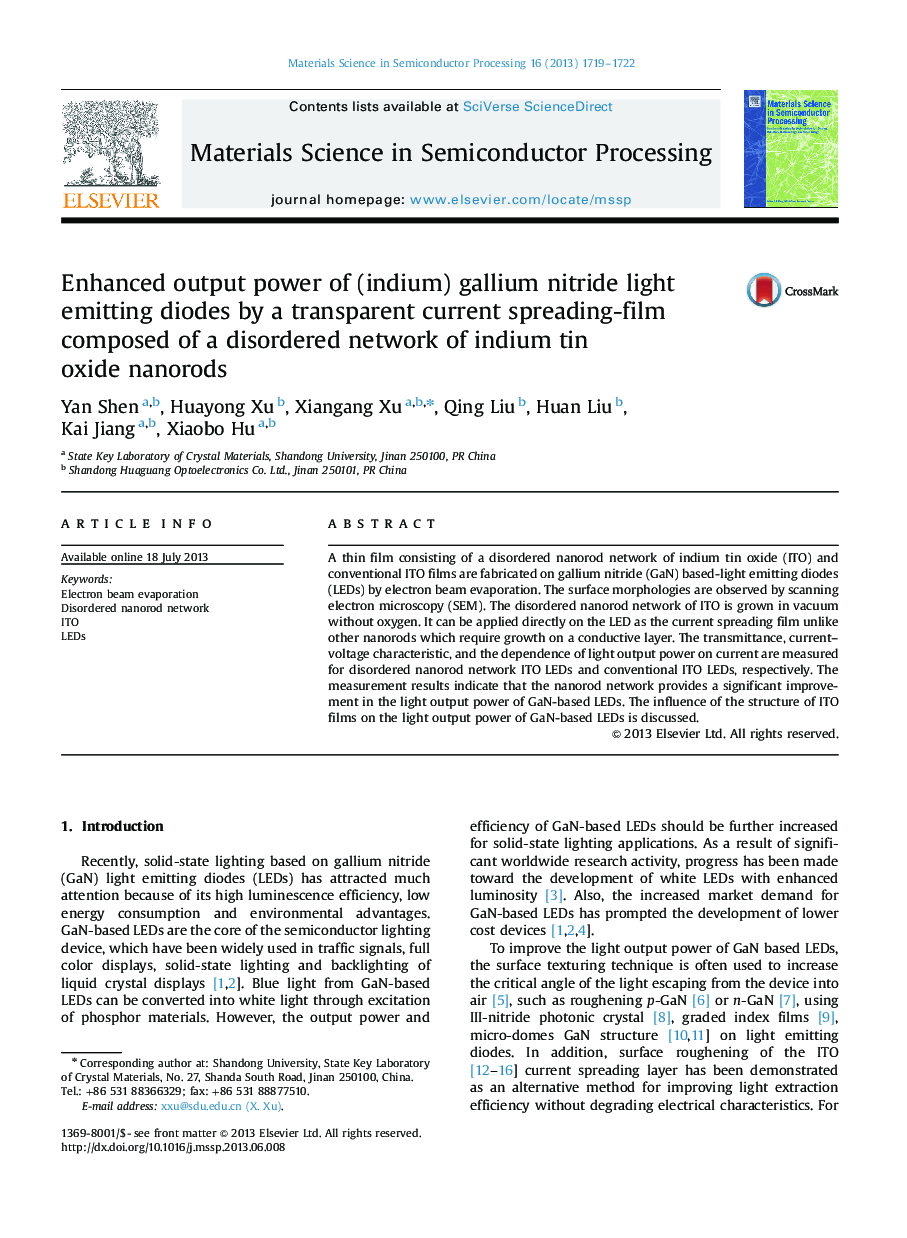| Article ID | Journal | Published Year | Pages | File Type |
|---|---|---|---|---|
| 10407039 | Materials Science in Semiconductor Processing | 2013 | 4 Pages |
Abstract
A thin film consisting of a disordered nanorod network of indium tin oxide (ITO) and conventional ITO films are fabricated on gallium nitride (GaN) based-light emitting diodes (LEDs) by electron beam evaporation. The surface morphologies are observed by scanning electron microscopy (SEM). The disordered nanorod network of ITO is grown in vacuum without oxygen. It can be applied directly on the LED as the current spreading film unlike other nanorods which require growth on a conductive layer. The transmittance, current-voltage characteristic, and the dependence of light output power on current are measured for disordered nanorod network ITO LEDs and conventional ITO LEDs, respectively. The measurement results indicate that the nanorod network provides a significant improvement in the light output power of GaN-based LEDs. The influence of the structure of ITO films on the light output power of GaN-based LEDs is discussed.
Keywords
Related Topics
Physical Sciences and Engineering
Engineering
Electrical and Electronic Engineering
Authors
Yan Shen, Huayong Xu, Xiangang Xu, Qing Liu, Huan Liu, Kai Jiang, Xiaobo Hu,
